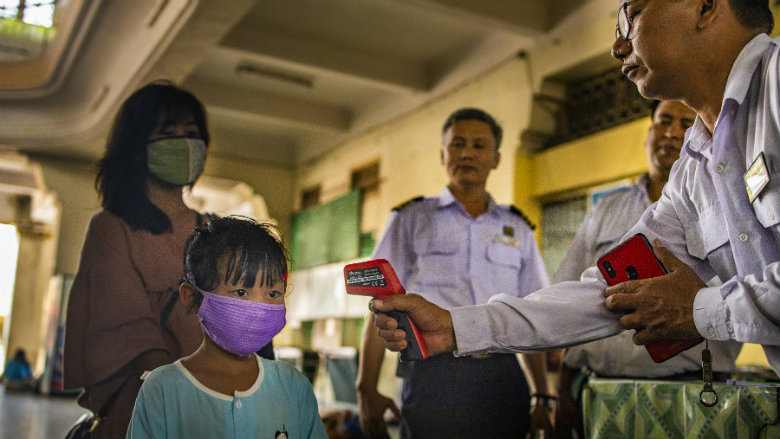The COVID-19 pandemic has interrupted Myanmar’s economic expansion, and while Myanmar is expected to narrowly escape a recession, helped by a strong start to the fiscal year, policy responses, and the limited disease outbreak, the growth recovery is at great risk.
Recent developments
- Due to the pandemic, Myanmar’s GDP growth forecast for FY2019/20 has been revised downward from 6.4 percent to just 0.5 percent as all sectors are hit, with adverse effects of varying intensity projected across all sectors.
- The impacts of the crisis transmit through external and domestic channels, and are not evenly distributed across sectors: tourism-related services and transportation activities are highly exposed to the pandemic, while the agriculture and information and communications technology (ICT) sectors have proven relatively resilient. Indeed, the ICT sector is experiencing a surge of activity driven by a sudden increase in telecommuting and e-commerce.
- Precautionary behavior and travel bans continue to negatively impact wholesale and retail trade, tourism-related services, and transportation, and the service sector (which represents 42 percent of the economy) growth rate is expected to fall to 1 percent. Meanwhile, industrial production (36 percent of the economy) is expected to contract by -0.2 percent in FY2019/20 as lockdown measures restrict access to labor, the closure of the overland border with China disrupts the supply of industrial inputs, and both domestic and international consumer demand remain soft. Agriculture (22 percent of the economy) has proved resilient with growth estimated to slow by less than in other sectors, to 0.7 percent, thanks to strong crop production offsetting a weakening livestock and fisheries sector.
Economic outlook and risks
- Under the baseline scenario, the GDP growth is rate expected to recover to 7.2 percent in FY2020/21 but it will take time for the economy to recover to the size it would have been if COVID-19 had not struck. As COVID-19-related shocks dissipate, a combination of infrastructure investment, increased activity in the service sector, stronger exports, and resurgent private consumption is projected to return the GDP growth rate to its pre-crisis trend.
- Downside risks dominate the growth outlook. An uncontrolled domestic outbreak could delay the resumption of economic activity in key sectors, especially tourism, transportation, manufacturing, and retail. Despite the government’s quick efforts, within its fiscal means, to mitigate the pandemic’s impact, the balance sheets of households, banks, and corporations could suffer lasting damage. Domestic risks are compounded by heightened external uncertainty, including the possibility of a deeper global recession.
Key findings of the special topic
Special Topic 1: The Firm-Level Impact of the COVID-19 Pandemic
- This edition of the MEM presents the results of the first round of a nationally representative survey of firms in Myanmar conducted by the World Bank in May 2020. While firms in all sectors have been affected by COVID-19, the nature and severity of the pandemic’s impact differ substantially across sectors. Agriculture firms were the most likely to report cashflow shortages and diminished access to credit, reflecting their greater vulnerability to economic crises. Most surveyed firms were not able to adopt new mechanisms to cope with the challenges posed by COVID-19. More than half of the surveyed firms were aware of local or national government support programs, but only a small fraction reported applying for such support.
Special Topic 2: The Impact of COVID-19 on Household Welfare and Poverty
- Slowing economic growth threatens to partially reverse Myanmar’s recent progress in poverty reduction while deepening the poverty of households that are already poor. Urban residents are highly exposed to both the health risks and economic effects of COVID-19. An anticipated decline in international remittances could directly reduce household income, though such remittances are concentrated among nonpoor households. Many poor households are especially exposed to the effects of the COVID-19 crisis due to job insecurity, employment in the informal sector, and low savings.


